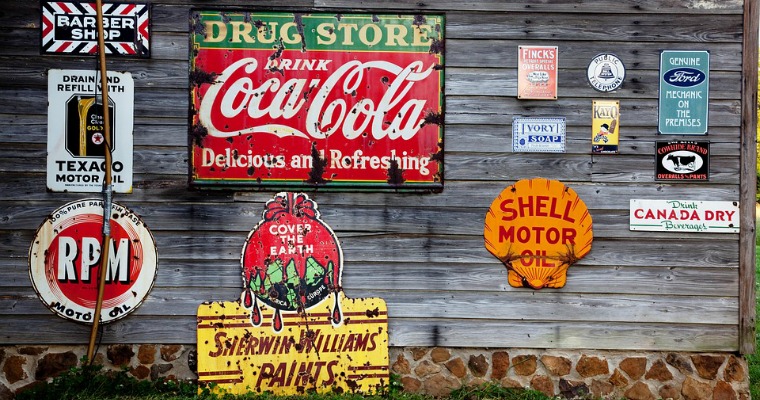Every day, more and more consumers are flocking to online shopping outlets and connecting with brands through social media. We’ve reached the point where more than 50% of consumer shopping happens on the web. Global Web Index released data last year that indicated over half of Instagram users are following brands online.
With the continued growth of digital engagement, marketers are increasingly focused on online marketing to attract new customers in addition to fulfilling their current customers’ needs. According to Content Marketing Institute, nearly 95% of marketers engage customers on Facebook and, overall, 90% of B2C marketers prioritize social media for engagement. Of the top 14 content marketing tactics, approximately 73% of business owners incorporate in-person events into their marketing strategies.
It’s surprising that we don’t see more marketers trying to integrate offline marketing with their online efforts, considering the reach and engagement that comes from online campaigns. The biggest challenge that B2C marketers face is consistently producing engaging content, but direct interaction with customers is also at the heart of engagement.
Whether you have brick-and-mortar locations or you’re a web-based brand selling consumer products, there are several ways to combine your offline engagement with online efforts to create more exciting customer experiences.
1. Inspire Offline Engagement With Social
Each week, I come across printed promo ads from brands trying to encourage me to shop at their stores. I tend to skim through most of them until I notice something that really interests me, then I might swing in to buy it. This same approach can be replicated in social media.

I’ll go with the classic approach that many food trucks take. These mobile restaurants typically don’t stop at the same location every day. Instead, they travel around their service area and set up shop in popular areas each afternoon. Then they use social media to inform customers where they can find their favorite food truck. The best posts I’ve seen also include visuals and location photos, usually with customers lining up and enjoying the food, to spur demand and drive customers out to that day’s location. They also include their social media information directly on the truck so customers can follow their social accounts to more easily find their location next time.
If you want to get more people into your store, emphasize the experience, not the products. Products don’t matter. They can just order those online. Compared to direct mail adverts, social media offers a completely free and unlimited medium to showcase your brand’s shopping experience and be part of something that’s both fun and interesting.
2. Drive Offline Event Attendance
Any brand that has tried to promote an event knows it’s not always easy to get the word out, especially for a new event that hasn’t proven its worth yet. Offline event attendance can be bolstered online through the strategic use of visual media and multiple online channels to reach wider audiences. You can greatly increase traffic to any event or online channel with social media when you employ the right strategy.

For example, before the recent launch of new ThinkGeek stores, information not only went out through ThinkGeek’s social channels, but fans were also notified through email and the social channels of ThinkGeek’s partner, Gamestop. While the store promotions were limited to a geographic region, the expanded social exposure ramped up the brand’s online visibility while also driving more foot traffic to the stores’ grand openings.
3. Drive Online Attendance
You can take a similar approach for online events, like webinars and community gatherings. I’ve subscribed to several influencer lists and other, smaller email lists that have my full contact information. On more than one occasion, I’ve received personal invitations via snail mail – in both letter and postcard formats – encouraging me to join a new program or register for an upcoming event.
While the cost of direct mail can be high if you’re blanketing a geographic area, you can minimize your advertising costs by segmenting a list and carefully targeting prospects and customers who are most likely to respond to the offer. Instead of sending out tens of thousands of direct mail invites, you might only send out 500 or 1,000, in which case your costs would be comparable to a social ad campaign.
The main difference here is that you can create more personalized messages for a segmented audience. This will entice them to partake in the opportunity and make them feel more valued as a member of the community. This case study from MarketingSherpa on creative pre-show direct mail campaigns demonstrates that the right message is crucial; 400 targeted mailers led to 406 visitors to the website they advertised.
4. Share Events
If you exhibit at trade shows, then you’re bound to run into customers and fans who made the trip to just come out and meet you. This is a great opportunity to build up your content and show off your brand’s unique experience to your online customers.

While a majority of your customer base might not be able to make it to those events, you can still make them feel as though they’re part of the show. Share the experience through onsite testimonials, video clips that show your team engaging with other customers, images and videos that show off your product selection, event collages featuring the show to connect customers to your brand, and even live streams. These efforts might encourage people to attend your next event, or your audience might simply share the material to send others from their network to your social channels.
5. Build Reach Offline
All printed marketing collateral you create should feature links to your website and social channels – including YouTube, if you share video content that offers customers behind the scenes glimpses into your business.
Every piece of printed material is an opportunity to share your brand, right down to the packing slips you include in product shipments. This information can open customers up to social channels that they may never have known existed.
This applies to brochures, direct mail pieces, menus, coupons, flyers – virtually anything that could wind up in a customer’s hands. Just be sure not to solely rely on the logos for social channels. Explicitly highlight the URL so it’s easy for customers and prospects to find you online.
6. Stir up User-Generated Content
There are many opportunities for compiling user-generated content – especially visual content – in nearly every industry. This is great for product-related businesses, but it can also apply to service industries and even SaaS companies. Your offline customers can provide a wealth of visual content to sell the experience and lifestyle your brand has to offer, and it’s incredibly easy to source this kind of content:
- Hold a promotion to incentivize customer submissions of images and video
- Post snippets of user-generated content and ask fans to submit their own content
- Feature new user-generated content posts each week to encourage more submissions
- Use packing slips or receipts to entice customers to send in offline content or user-generated content
7. Get Personal
VentureBeat reported that 75% of consumers want businesses to use their personal information to improve their shopping experience. If you can find ways to develop more personalized outreach efforts, you’ll drive up interest in your products, brand, or even retail location.
For example, putting a well-known local sporting team or event in the spotlight in your digital collateral can have a strong impact on specific segments of your audience, reeling them in and connecting them with your brand. Engaging customers in both online and offline environments is important for things other than simply building up your brand. If you want to have an impact, then you have to form a connection with the consumer that will turn their attention to your brand.
8. Track Campaigns Both Online and Offline
There are several online tools that can help you track the effectiveness of offline campaigns. You just need to know which marketing metrics apply to your campaign and the KPIs you’re targeting. This is easy to implement while driving your offline audience to your web channels. Some basic approaches include:
- Campaign-specific hashtags in print materials and displays
- Event-specific QR codes on products
- Campaign-specific URLs and coupon codes
- Lead capture tools in-store or at special events
During and after the event, you can use social insight and analytics to measure the impacts of your campaigns. If those efforts include offline lead capture, you should follow-up through online channels to shuffle those offline leads into your funnel. From there, you should be able to nurture them and start creating more personalized brand experiences that will drive up your conversions.
Conclusion
Never miss an opportunity to make your life easier by combining your offline and online marketing efforts. This strategy will vary depending on your business model and how you typically interface with customers. Use the above ideas to determine the appropriate fit between offline print, direct engagement, event promotion, and social media.
How do you currently tie your offline and online marketing efforts together? What kind of results have you seen? Share your insights with me in the comments below.
Image Credits
Featured Image: Falkenpost/Pixabay
All screenshots taken by Aaron Agius, October 2016


